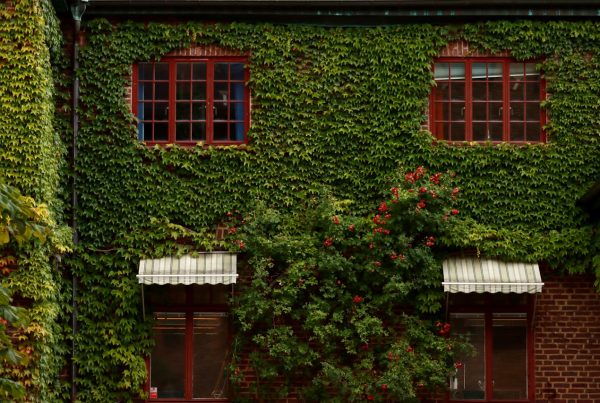We’ve had it with toxic paints. Ever since lead got banned from household paints in 1978, we’ve always thought that it’d be a whole lot safer to breathe the air in our homes from then on.
Then we caught whiff of VOCs or volatile organic compounds. These toxic gases—not just limited to paint but also varnishes, lacquers, stains, strippers, etc—can be emitted in miniscule amounts over the years, long after the paint job is done, and they mean serious trouble. Respiratory problems and even cancer have been linked to top VOC’s such as benzene and formaldehyde.
Which is why eco-friendly paints come to the rescue.
Low-VOC paints, or even better zero-VOC paints are water-based, not petroleum-based, so you won’t be getting any of that noxious smell. They’re safe for the environment, doesn’t release toxic gases in the atmosphere, some can even be composted, and they’re very LEED-compliant as well. The result: nicely-painted walls and good indoor air quality.
1. Choose zero-VOC when you can. For paint to be low-VOC, the Environmental Protection Agency requires no more than 250 grams of VOCs per liter. For zero-VOC paints, it’s strictly <5 grams per liter.
Since you’re considering lessening the impact of VOCs anyway, you might as well nix the VOCs altogether and go for zero-VOC alternatives.
Eco-friendly paints inevitably can be a little more expensive than your regular toxic paint, but when you consider you and your family’s health in the long run, they’re actually worth it.
Incidentally, LEED 2009 has specific requirements for different kinds of paints: (primers [<200 g/L], flat [<50 g/L], non-flat [<150 g/L], and anti-corrosive [<250 g/L]).
Eco-friendly Paint Brands to consider
• Benjamin Moore Nature (offers up to 3,000 colors, LEED-compliant)
• Benjamin Moore Eco Spec
• California Paints Elements
• Yolo Colorhouse (zero-VOC, LEED-compliant)
• Behr Premium Plus Enamel Low Luster
• Olympic Premium
• Home Depot’s Freshaire (Certified by the GreenGuard Environmental Institute)
• Mythic Paint
• Sherwin-Williams Harmony (They also carry a self-priming acrylic paint for exteriors which is just as environment friendly.)
• EcoDesign Bioshield
• Aglaia (All the way from Germany, this eco-friendly paint company has been creating natural paints since 1968)
• Earthborn
• American Pride (Certified by Green Wise)
2. Milk is good for you. Milk paints have been used for thousands of years, back when we didn’t rely yet on petroleum-based paints.
Milk paints actually use milk casein, so they’re certainly non-toxic. You can’t get any more organic than milk. Milk paint is perfect for achieving that antique look on walls and furniture, and you can rest assured you can safely enlist your kids to help in the paint job.
Eco-friendly Brands to consider:
• Anna Sova Baby Paint
• Old-fashioned Milk Paint
• Real Milk Paint
• Milk Paint (has been making milk paints since the 1970s)
Or you can simply Google “milk paint recipes” for a host of DIY instructions for making your own eco-friendly milk paint.
3. Check out Clay-based paints. They’re made from naturally-occurring clays and pigments. Unlike conventional paints, clay paints are breathable, no-odor, and no-VOC. They’re even static-resistant (good for deflecting dust and other allergens), very durable, and come in soothing, earthy hues. Eco-friendliness, definitely check.
Eco-friendly Brands to consider:
• Terrafino
• Bioshield Clay Paints
• Earthborn
• Ecos Organic Paints
4. Consider vegetable-based paints too. Milk-based paints might be eco-friendly, but they’re still dependent on the cattle industry. For a lesser environmental impact, there are plant-based paints with vegetable-derived casein instead of milk casein.
Eco-friendly Paint Brands to consider:
• Unearthed Vega Paint
• AFM Safecoat Naturals (a LEED-qualified paint)
5. Go Solar. And now, something radical that hopefully will hit store shelves in the coming years. Solar paint, developed by a group of Notre Dame researchers last year, is a paint that reportedly converts sunlight to electricity, just like your plain old solar panel.
Containing titanium dioxide and semiconducting cadmium nanocrystals, solar paint (or Sunbelievable as dubbed by the team) has only 1{e3829ec1db02d54faaf9fa2de0d48db26af01d7a7944a63c3b26976124791cab} efficiency in converting light to electricity. Not exactly a powerhouse, but it’s definitely a start.
Nowadays, eco-friendly paints are no longer the elusive, hard-to-find products in hardware stores guaranteed to elicit a “Huh?” response from the sales clerk. Paint manufacturers are wising up on green paint alternatives, and proof of that are the many organic, completely non-toxic paint brands we now have.
The choices can be bewildering—so many brands, colors, and finishes to choose from. Feel free to read up on any of our eco-friendly paint recommendations for more info.











